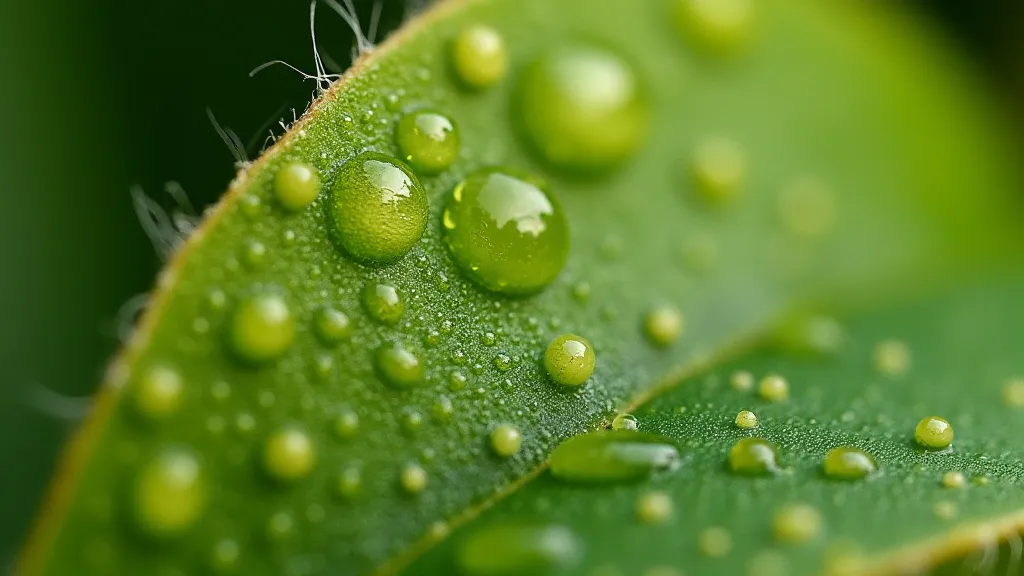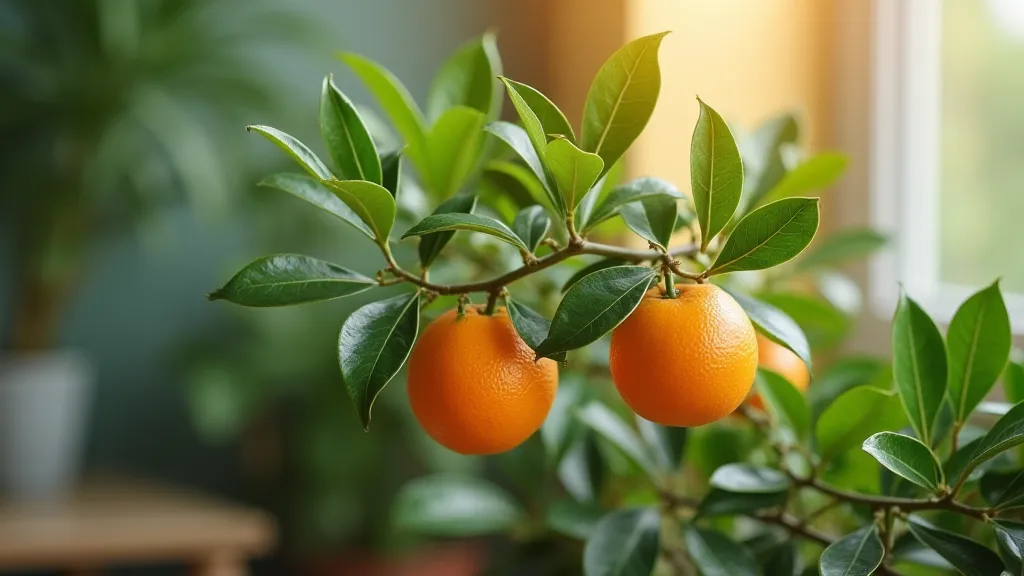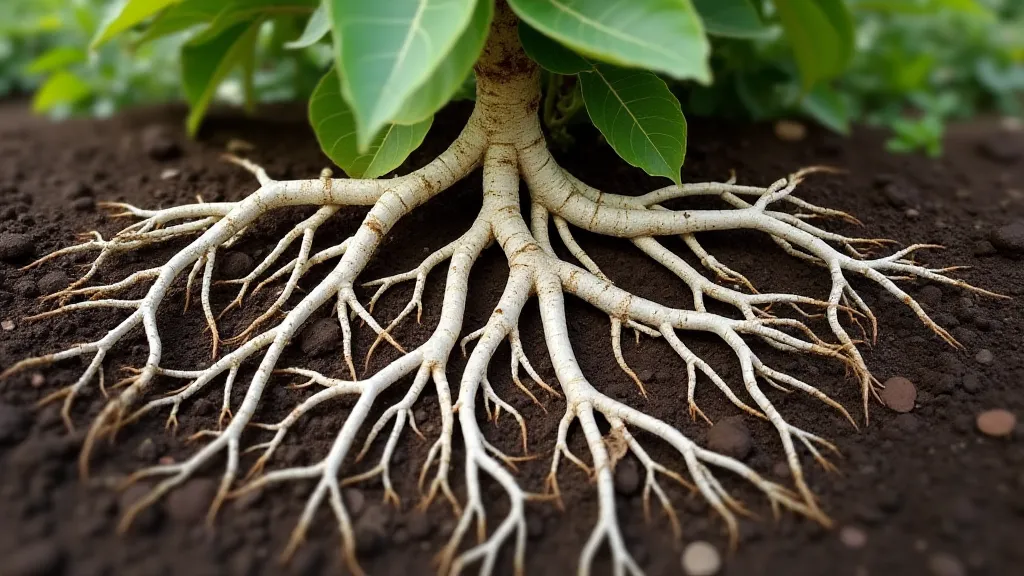Dealing with Pests & Diseases on Indoor Citrus
Growing dwarf citrus trees indoors is a rewarding experience, providing fresh fruit and beautiful greenery, even without a traditional garden. However, like any plant, indoor citrus trees are susceptible to pests and diseases. Early detection and proper treatment are crucial for maintaining their health and ensuring a bountiful harvest. This guide will help you identify and address common issues.
Common Pests Affecting Indoor Citrus
Spider Mites
Spider mites are tiny, sap-sucking arachnids that thrive in dry conditions. They can quickly infest indoor citrus trees. Look for fine webbing on leaves and stems, and tiny dots (the mites themselves) on the undersides of leaves. Affected leaves may appear stippled or bronzed.
Treatment: Increase humidity around the plant by misting regularly or using a humidifier. Wipe leaves with a damp cloth. Horticultural oil or insecticidal soap are effective treatments. Apply according to product instructions, ensuring thorough coverage of all leaf surfaces. Repeat applications may be needed.

Aphids
Aphids are another common pest, often found on new growth. They are small, pear-shaped insects that also suck sap. They can be green, black, brown, or yellow, and often cluster together. Sticky honeydew may be present on leaves and surrounding surfaces.
Treatment: A strong spray of water can often dislodge aphids. Insecticidal soap or horticultural oil are also effective. Ladybugs are a natural predator of aphids and can be introduced to your indoor garden.
Scale
Scale insects are small, armored pests that attach themselves to stems and leaves. They appear as small, immobile bumps. They also feed on plant sap and excrete honeydew. Black sooty mold can grow on the honeydew, further damaging the plant.
Treatment: Scale are more difficult to remove than aphids. Manually scrape off visible scales with a cotton swab dipped in rubbing alcohol. Horticultural oil is also effective, smothering the scales. Repeat applications are usually required.
Common Diseases Affecting Indoor Citrus
Root Rot
Root rot is a serious problem caused by overwatering or poor drainage. Symptoms include yellowing leaves, wilting, and stunted growth. The roots will be brown and mushy.
Prevention & Treatment: Ensure your citrus tree is planted in a well-draining pot with appropriate potting mix. Avoid overwatering – allow the soil to dry out between waterings. Proper watering is key to the health of any citrus plant; you can learn more about the ultimate guide to watering dwarf citrus trees indoors. If root rot is suspected, repot the tree into fresh potting mix and trim away any affected roots. Fungicides can be used in severe cases, but prevention is always best.
Citrus Greening (Huanglongbing - HLB)
Citrus greening is a devastating disease transmitted by the Asian citrus psyllid. While less common indoors, it’s still a possibility if the psyllid is present. Symptoms include blotchy mottle on leaves, small bitter fruit, and overall decline in health. Unfortunately, there is no cure for citrus greening.
Prevention: Thoroughly inspect any new citrus plants for signs of the psyllid and disease before bringing them indoors. Maintain a healthy plant through proper care and sanitation to help it resist disease.
General Tips for Pest & Disease Prevention
- Regular Inspection: Inspect your citrus tree regularly for any signs of pests or diseases.
- Proper Watering: Avoid overwatering and ensure good drainage.
- Adequate Light: Provide sufficient light for healthy growth.
- Good Air Circulation: Ensure good air circulation around the plant to reduce humidity and prevent fungal diseases.
- Cleanliness: Keep the area around the plant clean and free of debris.
- Quarantine New Plants: Quarantine any new citrus plants for a few weeks before introducing them to your existing collection.
Beyond just avoiding pests and diseases, a thriving indoor citrus tree needs a balanced diet. Understanding how to fertilizing dwarf citrus trees: a complete guide can be the difference between a struggling plant and a flourishing one.
Many people are captivated by the story and history of these beautiful plants. If you’re interested in learning more about the history and lore of citrus fruits, you’re in for a fascinating journey through cultures and continents.


Troubleshooting and Advanced Care
Even with preventative measures, problems can still arise. Let’s dive into more specific troubleshooting scenarios.
Leaf Drop – What Does it Mean?
Sudden leaf drop can be alarming. While it's a natural process for older leaves, excessive leaf drop warrants investigation. It could be a sign of overwatering, underwatering, sudden changes in temperature or light, or even pest infestations. Carefully assess your watering habits and environmental conditions.
Yellowing Leaves – Beyond Nutrient Deficiency
Yellowing leaves are often associated with nutrient deficiencies, but it's not always the case. While a balanced fertilizer is crucial, yellowing can also be a symptom of root rot, spider mite infestations, or even the early stages of citrus greening. Thoroughly inspect the leaves for pests and assess the root system for signs of rot.
Stunted Growth – A Combination of Factors
Stunted growth indicates a problem preventing the tree from reaching its full potential. It's often a combination of factors, including insufficient light, improper watering, nutrient deficiencies, and pest or disease infestations. Ensure your tree is receiving adequate sunlight and fertilizer and regularly inspect it for pests and diseases. Repotting into a larger container with fresh potting mix can also stimulate growth.
Creating the Ideal Indoor Environment
Replicating the natural environment of a citrus tree indoors requires attention to several key factors.
Light Requirements
Citrus trees thrive in full sunlight. Ideally, they need at least 6-8 hours of direct sunlight per day. If you don’t have access to a sunny window, consider using grow lights to supplement natural light.
Humidity Levels
Citrus trees prefer humid conditions. Indoor air can be dry, especially during winter months. Increase humidity by misting the tree regularly, using a humidifier, or placing a tray of water near the plant.
Temperature
Maintain a consistent temperature between 65-80°F (18-27°C). Avoid sudden temperature fluctuations, which can stress the tree.
Air Circulation
Good air circulation helps prevent fungal diseases. Position the tree away from crowded areas and ensure there’s adequate ventilation.
Long-Term Care and Propagation
Caring for a dwarf citrus tree is a long-term commitment. With proper care, it can provide years of enjoyment and delicious fruit.
Repotting
Repot the tree every 2-3 years, or when it becomes root-bound. Choose a pot that’s slightly larger than the previous one and use a well-draining potting mix.
Pruning
Prune the tree to maintain its shape and remove any dead or diseased branches. Pruning also encourages new growth and fruit production.
Propagation
Propagate new trees from cuttings or seeds. Cuttings are easier to root and produce a tree that’s genetically identical to the parent plant. Seeds will produce a tree with slightly different characteristics.





